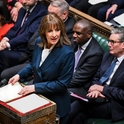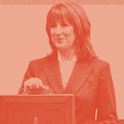In a competitive field, the introduction of free schools has been perhaps one of the more controversial education reforms of the last decade.
Eight years on from when the first free schools opened their doors, the Education Policy Institute has today published its latest assessment of how successful the programme has been.
State-funded, but independent of local authorities, free schools were introduced during Michael Gove’s tenure as education secretary in the early days of the Coalition government, and now number over 500. They are accountable to Ofsted, just like any other state-funded school—though many are yet to be inspected. A high proportion of them are also faith schools—one in six.
Free schools were intended to bring new ideas into the school system, though over time the aims have become somewhat diluted. Nevertheless, in recent months there has been something of a resurgence under Boris Johnson’s government.
The prime minister himself was at the forefront of the announcement of a new wave of free schools. Elsewhere, the recent Conservative Party conference saw no fewer than four free school leaders join the schools minister Nick Gibb on stage to discuss their stories, while Gavin Williamson, the secretary of state, took the opportunity to remind his audience of Labour’s plan to end the programme.
If we do have a general election in the coming months, it’s a safe bet that free schools will be one of the key dividing lines in education policy.
But given the diverse and evolving aims, it is not always clear what success for the programme actually looks like. Some free schools came into being as an opportunity to innovate and offer something different. Others were set up in response to parents’ demand for new schools—especially where the quality of existing schools was poor. In many cases, new free schools were simply a response to a rising pupil population and the need for more places.
In short, the name free school is now something of an umbrella term capturing nearly all new schools.
Regardless of their origins, they have all joined a school system in England in which family background is still too big a predictor of what pupils will achieve. Pupils from low income backgrounds are on average a year and a half behind other pupils by the time they take their GCSEs. One of the aims for free schools was to help tackle this disadvantage gap, and we do find that free schools have been set up in areas of economic disadvantage and, among secondary free schools at least, they are educating their fair share of pupils from low income families.
But there’s an important caveat. When we looked more closely, and linked our analysis with data from the Office for National Statistics, we found that free schools, particularly the highest performing free schools, are actually drawing pupils from neighbourhoods where pupils typically perform well at school already. In fact, pupils in top-performing free schools are almost twice as likely as other pupils to be drawn from these highest performing neighbourhoods.
And crucially, while these neighbourhoods tend to have lots of children living in low income families, these children tend to do much better academically than poorer children elsewhere. Pupils from economically disadvantaged backgrounds in these areas perform almost as well as non-disadvantaged pupils elsewhere.
It’s difficult to pinpoint precisely why we see such differences. These areas typically have higher proportions of certain ethnic and immigrant groups, and the relationship between ethnicity, income and school attainment is complex, but on average these groups have higher attainment than children living in predominantly white, low income, neighbourhoods.
It is those “left behind” areas, where underperformance at school is entrenched, that have been much less served by the expansion of free schools. Taken across the programme as a whole, when free schools are set up in areas that already have enough school places, it appears that the creation of more places has not been directed towards areas in need of more high-quality schools.
All of this matters, not just within the context of assessing free schools, but also to what lessons we take away from the most successful ones in terms of their alternative approaches to teaching, curriculum and behaviour.
The closeness of ministers to some of the highest performing schools mean that they are often very quick to celebrate their successes and encourage other schools to learn from their practices in the classroom.
But ministers need to recognise the very different circumstances that other schools may be operating in. What appears to work in one school may not be transferable to another setting, or that approach might not be the thing that is driving outcomes at all. Ultimately, the individual schools attended by pupils only account for a small proportion of the variation in education outcomes.
None of this is to dismiss the high performance of individual free schools. Some of the highest performing achieve results that are much better than you would expect even after controlling for their school intakes.
But policy makers and commentators need to pause and reflect on what genuinely raises school attainment, particularly for the most disadvantaged. And if ministers are to proceed with the expansion of the free schools programme, they need to make it work for those children in communities that continue to struggle.
Natalie Perera is Executive Director and Head of Research at the Education Policy Institute
Has the free schools programme been a success?
They remain a dividing line in education policy. But what genuinely raises attainment for disadvantaged groups?
October 17, 2019

Michael Gove, who introduced . Photo: WIktor Szymanowicz/NurPhoto/PA Images











